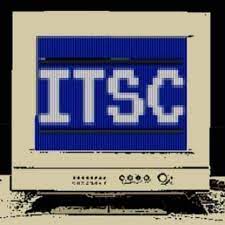Digital banking is evolving at a rapid pace, with voice technology and emotional AI leading the charge in redefining customer experiences. As financial institutions race to meet rising expectations for convenience and personalization, these innovations are
not just futuristic buzzwords—they are shaping the way people interact with their banks every day.
Humanizing Digital Interactions with Voice Technology
Voice technology has come a long way from basic speech recognition. Today’s systems can understand natural language, context, and even intent, making them a powerful tool for digital banking. Customers can now check balances, transfer funds, or resolve issues
simply by speaking to their devices, whether it’s through a smartphone, smart speaker, or embedded banking app. This hands-free approach not only boosts accessibility for users with disabilities but also fits seamlessly into busy lifestyles, making banking
more intuitive and less transactional.
Financial institutions are investing heavily in voice-driven solutions to differentiate themselves in a crowded market. The evolving landscape of
fintech trends in 2025 highlights the increasing role of AI-driven personalization, open banking expansion, and the integration of cutting-edge technologies that financial institutions
must embrace to remain competitive and compliant. Voice technology is at the heart of this transformation, offering a more human-centric approach to digital engagement.
Emotional AI for Enhanced Personalization
Emotional AI takes digital banking a step further by interpreting customers’ emotions through voice tone, word choice, and behavioral cues. This technology enables banks to respond empathetically, whether a customer is frustrated about a declined transaction
or excited about a new savings milestone. By recognizing and adapting to emotional states, banks can deliver tailored support, reduce friction, and build deeper trust with their users.
For example, an emotionally aware chatbot might escalate a conversation to a human advisor if it detects distress, or proactively offer educational resources when a customer seems confused. This level of personalization not only improves satisfaction but
also drives loyalty in an industry where switching providers is easier than ever. As emotional AI matures, it is poised to become a cornerstone of digital banking strategy, enabling truly responsive and individualized service.
Compliance Challenges in Digital Banking Innovation
While the benefits of voice technology and emotional AI are clear, integrating these tools comes with significant regulatory and compliance challenges. Financial institutions operating across diverse jurisdictions, including those offering services through
offshore betting sites, must navigate complex compliance landscapes when integrating innovative technologies. Data privacy, consent management, and the ethical use of AI are just a few of the hurdles that banks must
address to maintain trust and avoid regulatory pitfalls.
Institutions are responding by investing in robust governance frameworks, transparent AI models, and ongoing staff training. Collaboration with regulators and technology partners is also essential to ensure that new solutions not only enhance customer experience
but also meet the highest standards of security and compliance. As the regulatory environment continues to evolve, banks that proactively address these challenges will be best positioned to harness the full potential of voice and emotional AI.
Voice technology and emotional AI are no longer optional add-ons—they are fast becoming essential components of the digital banking experience. By humanizing interactions, delivering personalized support, and navigating the complexities of compliance, financial
institutions can create meaningful connections with customers in an increasingly digital world. As these technologies mature, their impact will only deepen, offering new opportunities for innovation and differentiation in the financial sector.
The post How Voice Technology and Emotional AI Transform Digital Banking Experiences: By Konstantin Rabin first appeared on TechToday.
This post originally appeared on TechToday.
